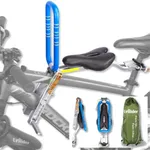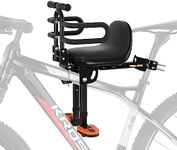We Use CookiesWe use cookies to enhance the security, performance,
functionality and for analytical and promotional activities. By continuing to browse this site you
are agreeing to our privacy policy
Best Bike Baby Seats
From leading brands and best sellers available on the web.#2
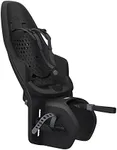
Thule
Thule Yepp 2 Rear Rack Mount Child Bike Seat
View Product
#3

Thule
Yepp Nexxt2 Maxi Frame Mount, Black
View Product
#4
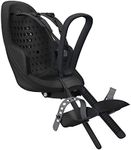
Thule
Thule Yepp 2 Mini Midnight Black
View Product
#5
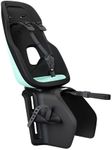
Thule
Yepp Nexxt2 Maxi Rack Mount, Mint
View Product
#6

Thule
Thule Yepp 2 MIK HD, Black
View Product
#7
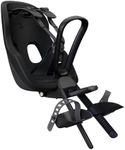
Thule
Thule Yepp Nexxt 2 Mini - Front Mounted Child Bike seat - Lightweight & Breathable seat - Adjustable footrests & footstraps - Fast Mount System - 5 Point Harness System - Magnetic childproof Buckle
View Product
#8
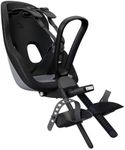
Thule
Thule Yepp Nexxt 2 Mini, Monument
View Product
#9
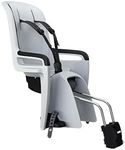
Thule
Thule RideAlong 2
View Product
#10
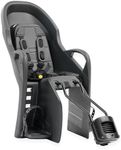
Burley
Burley Dash FM Extended Rails Child Bike Seat
View Product
Buying Guide for the Best Bike Baby Seats
Choosing the right bike baby seat is all about ensuring your child's safety, comfort, and your own convenience while riding. There are several types and features to consider, and understanding what each one means will help you make the best choice for your family. Think about your typical rides, your child's age and size, and how you plan to use the seat—whether for daily commutes, weekend adventures, or occasional outings. The right seat will make cycling together enjoyable and stress-free.Mounting PositionThe mounting position refers to where the baby seat attaches to your bike, usually either at the front (between the handlebars and the rider) or at the rear (behind the rider, over the back wheel). Front-mounted seats allow you to keep an eye on your child and interact with them, but they are generally suitable for younger, smaller children. Rear-mounted seats are more common and can accommodate larger or older children, offering more support and often more comfort. Your choice should depend on your child's age and size, your bike's compatibility, and your own comfort with balance and visibility.
Weight and Age LimitThis specification tells you the maximum weight and age the seat is designed to safely carry. It's important because exceeding these limits can compromise safety. Seats are usually divided into those for infants and toddlers (up to about 15 kg or 33 lbs) and those for older children (up to about 22 kg or 48 lbs). Always check your child's current weight and age, and choose a seat that will accommodate them for as long as you plan to use it.
Harness SystemThe harness system is the set of straps that secure your child in the seat. A good harness keeps your child safe and comfortable, preventing them from standing up or falling out. Most seats use a three-point or five-point harness. Five-point harnesses offer more security, especially for younger or more active children. When choosing, consider how easy the harness is to adjust and fasten, and whether it will fit your child snugly as they grow.
Footrests and StrapsFootrests provide a place for your child to rest their feet, and straps keep their feet securely in place. This is important for both comfort and safety, as dangling feet can get caught in the bike's moving parts. Look for adjustable footrests and secure straps, especially if your child is still growing. Make sure the system is easy to use and can be adjusted as your child gets taller.
Seat Padding and ComfortPadding in the seat and backrest makes rides more comfortable for your child, especially on longer trips or bumpy roads. Some seats offer more cushioning and ergonomic shapes, which can help prevent discomfort or fidgeting. If you plan to ride often or for longer distances, prioritize seats with good padding and support. For short, occasional rides, basic padding may be sufficient.
Safety FeaturesSafety features can include things like side protection, reflective elements, and secure locking mechanisms. Side protection helps shield your child from bumps and falls, while reflectors make you more visible in low light. A locking mechanism can prevent the seat from being easily removed when parked. Consider your riding environment—if you ride in traffic or low-light conditions, extra safety features are especially important.
Ease of Installation and RemovalThis refers to how simple it is to attach or detach the seat from your bike. Some seats use quick-release systems, while others require tools. If you need to frequently remove the seat (for example, to switch between bikes or for storage), look for a model that makes this process easy. If the seat will stay on your bike most of the time, a more permanent attachment may be fine.


